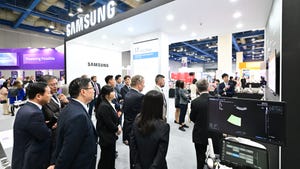Build Optical Cross-Connect Transport Networks With the Lowest per-Bit Cost
The acceleration of 5G application, rapid development of video services, increasing demands for quality and longer video viewing times lead to sharp traffic increases.
March 13, 2020

The acceleration of 5G application, rapid development of video services, increasing demands for quality, and longer video viewing times lead to sharp traffic increases. Omdia predicts that global mobile broadband (MBB) and fixed broadband (FBB) traffic will reach approximately 4,300,000 PB in 2023, roughly triple 2019's traffic. This brings great changes and challenges to transport networks.
Bandwidth bottleneck: Networks are congested, user experience is poor, and new services are difficult to provision. By applying ultra-high-speed transmission technology and efficient spectrum utilization, Huawei solution increases the load of each "vehicle" and the "lanes" of each "road". However, network traffic is unevenly distributed, and the core nodes have heavier traffic. A single plane needs upgrading to 3D architecture to meet the transmission requirements at the core nodes. This doubles the transmission directions, which is equivalent to building an overpass over heavy-traffic sections to ease congestion.
Insufficient network coverage: 5G and video services cause WDM devices to move downward to CO nodes. The number of rings connected to core nodes correlates with the increase of CO nodes, and consequently, the number of degrees at core nodes increases by 2N (N indicates the number of connected rings). The network then flattens to enhance coverage. This is similar to adding local roads to a main road, where each new local road provides two more directions.
Mesh network: As services migrate to the cloud and the number of DCs increase, inter-DC services require low latency and high availability, driving the evolution of inter-DC connections to mesh networks. Furthermore, the number of degrees increases by (N-3) (N indicates the number of network nodes). This is similar to providing detours when roads are unavailable.
The increase of degrees at core nodes brings challenges such as insufficient equipment room space, high power consumption, complex fiber connections, service provisioning and O&M. The zero-touch transport solution will help operators address these problems.
One board of Huawei OptiX OSN P32/P32C, which leverages the unique all-optical backplane technology, can replace the function of a subrack in the traditional reconfigurable optical add/drop multiplexer (ROADM) solution. Therefore, each degree needs only one board, significantly improving integration. This reduces footprint by 90%, power consumption by 60%, and eliminates the need for internal fiber connection, minimizing the usage of equipment room resources.
In terms of O&M, optical cross-connect (OXC) utilizes the digital optical layer and works with the NCE, which can visualize end-to-end wavelength resources, monitor fiber quality, wavelength performance, usage, and paths in real time. It can also predict optical-layer faults. It is similar to using a map application that informs users of real time traffic conditions so that they can plan the fastest and most convenient route.
Transport networks are one of the most important infrastructure networks of operators. With the accelerated growth of 5G and video services, transport networks evolve to a 3D, flattened, and meshed architecture. OXC simplifies the optical layer and enables flexible grooming, while NCE-T enables efficient and proactive O&M, helping operators build a zero-touch transport network, and further reduce the per-bit transmission cost.
This content is sponsored by Huawei.
You May Also Like










